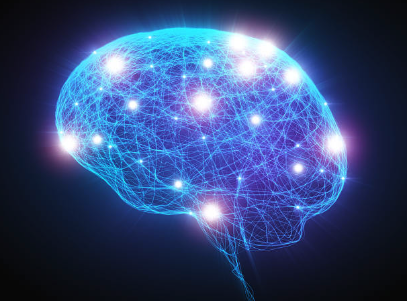Opioids and the Brain
Opioids are powerful drugs that act on the central nervous system in order to provide pain relief. The Drug Enforcement Administration (DEA) classifies most commercially available opioids as Schedule II controlled substances. This means that drugs such as morphine, fentanyl, oxycodone or hydromorphone are considered to have a very high potential for abuse and lead to severe psychological or physical dependence. With continued use, opioids change the chemistry of the brain whether or not a person develops addiction to the opioid or not.
How do changes in the brain begin? When a person takes a drug such as morphine or illicit heroin, the drug enters the central nervous system in the brain and binds to receptors known as “opioid receptors” or “mu receptors”. These receptors are located in areas of the brain known as the “reward pathway” (cerebral cortex, nucleus accumbens, etc.) and “pain pathway” (brainstem, spinal cord, thalamus, etc.). When binding to the pain pathway opioids provide pain relief, however, when binding to the reward pathway, opioids cause euphoria and release a key neurotransmitter known as dopamine. Dopamine signals the neurons (brain or nerve cells) of the body to create a pleasurable feeling or “high”. The brain is naturally circuited to repeat processes that trigger the reward pathway. Therefore, this may lead to repeated use of the opioid in order to trigger the reward pathway again. However, the next time the opioid is taken will never be the same as the first.
Why do you need to take more of a drug to achieve the same effects as before? Taking opioids over time leads to drug tolerance. This happens to anyone who takes opioids, not just people looking to achieve a “high” or pleasurable feeling. Changes in the receptors and enzymes acting in the reward pathways of the brain cause changes in cell firing, this leads to a minimized response to the drug. This means, that it will take more of the drug to achieve a response, be it pain relief (the pain pathway) or pleasure (the reward pathway) –often referred to as “chasing a high” when the reward pathway is involved.
As more of the opioid is taken, more of these changes present and the neurons of the brain no longer function normally. Drug dependence occurs when the neurons of the brain adapt as a result of repeated drug exposure and can’t function normally without the drug. Drug dependence occurs in areas of the brain not involved in the reward pathway. Therefore, this happens to anyone with repeated use of opioids.
Drug dependence leads to drug withdrawal when the opioid is removed as the centers in the brain have become accustomed to receiving the drug to achieve effects. Finally, addiction may occur when the opioid has activated the reward pathway of the brain and the person has a very strong urge to continue use even though there is no medical necessity. Often, people who are addicted to opioids are also dependent and will go through withdrawal if they discontinue the opioid. With repeated use, the person will very likely become dependent on the opioid regardless of the purpose for use. However, the person may not be addicted to the opioid in terms of seeking a euphoric effect. Addiction occurs when a compulsive urge to use more opioids to activate the reward pathway of the brain takes over.
Since anyone taking opioids will become dependent on them and will go through withdrawal when the opioid is removed –many people who may not necessarily be addicted to opioids may present as so. For instance, a person taking an opioid for back pain for a long period of time will consistently need more of the opioid to achieve pain relief. If the person’s provider decides to stop prescribing the opioid, the person will go through withdrawal and may become desperate to achieve pain relief and prevent withdrawal. Therefore, the person may appear like they are addicted to the opioid, however, they have simply just become dependent on the opioid. Therefore, it may be difficult to differentiate between opioid dependence and true opioid addiction.
Addiction to opioids is a very complex disease process, involving many different variables. Opioids have a high likelihood of abuse, simply because they impact key areas of the brain responsible for positive reinforcement and reward. The long-term effects of opioids on the brain remain unclear. Physical and structural function may return to baseline following long-term use. However, opioid use may have profound psychological effects that can continue for many years following discontinuation. Fortunately, through counseling and medication-assisted treatment programs, recovery is possible.
References:
- American Society of Addiction Medicine: Opioid Addiction 2016 Facts and Figures https://www.asam.org/docs/default-source/advocacy/opioid-addiction-disease-facts-figures.pdf
- Levran O, Yuferov V, Kreek MJ. The genetics of the opioid system and specific drug addictions. Hum Genet. 2012 Jun;131(6):823-42. doi: 10.1007/s00439-012-1172-4. Epub 2012 May 1. Review. Citation on PubMed: https://www.ncbi.nlm.nih.gov/pubmed/22547174
- The neurobiology of drug addiction. Available from: https://www.drugabuse.gov/publications/teaching-packets/neurobiology-drug-addiction/section-iii-action-heroin-morphine/10-addiction-vs-dependence
- Cahill CM, Walwyn W, Taylor AMW, Pradhan AAA, Evans CJ. Allostatic Mechanisms of Opioid Tolerance Beyond Desensitization and Downregulation. Trends Pharmacol Sci. 2016 Nov;37(11):963-976.
- Upadhyay J, Maleki N, Potter J, Elman I, Rudrauf D, Knudsen J, Wallin D, Pendse G, McDonald L, Griffin M, Anderson J, Nutile L, Renshaw P, Weiss R, Becerra L, Borsook D. Alterations in brain structure and functional connectivity in prescription opioid-dependent patients. Brain. 2010 Jul;133(Pt 7):2098-114.

